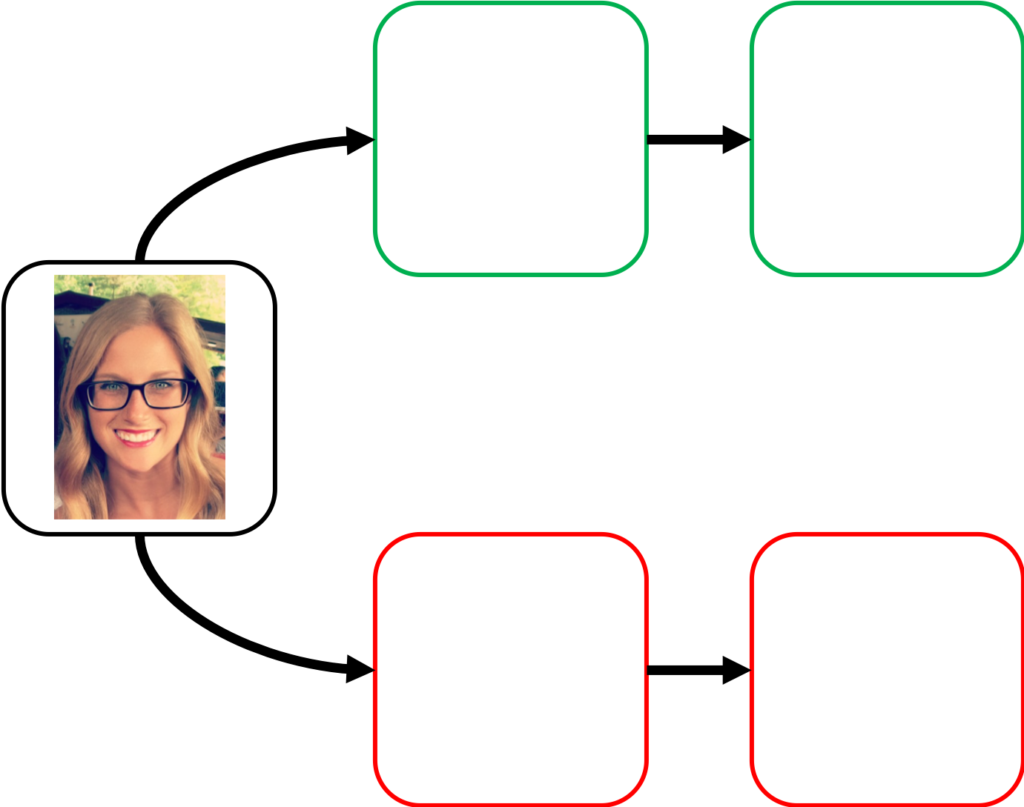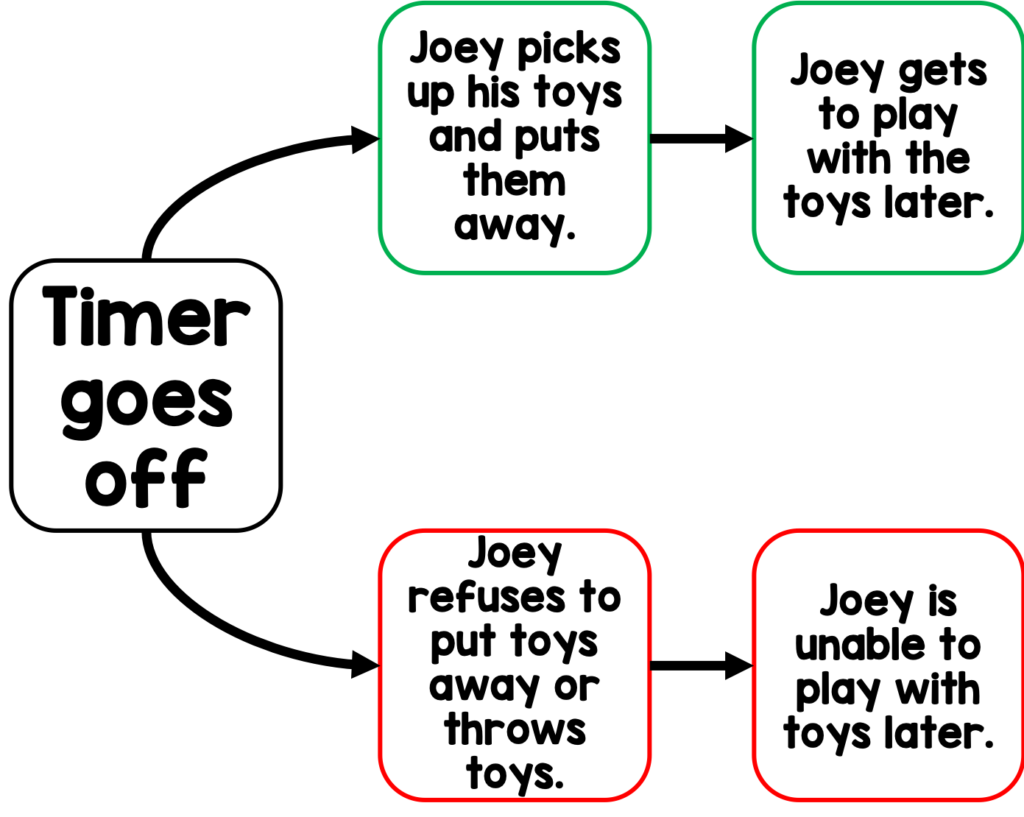I am excited to introduce this week’s guest blogger, Abby from Mrs. Moe’s Modifications to talk all about contingency maps.

Contingency maps are based on the ABA principle that behavior follows the ABCs of behavior… antecedent, behavior, and consequences.
Students with ASD have strong visual skills. Visual prompts work throughout the day using visual schedules, mini schedules, and token economies. This is another visual support tool that students can have as a resource to support them in learning rules.
Contingency maps are a strategy that helps students learn how their behaviors are contingent, or tied to consequences. They are more concrete and direct than social stories or verbal direction in teaching rules and skills for students.
It is important to define some terms before diving deep into contingency mapping. The three most important are the ABCs of behavior.
Antecedent: What happens right before the behavior occurs (ex. direction given, presence of specific person)
Behavior: The action that is observable and measurable the child engages in (ex. sit in chair, raise hand, leave the teaching area)
Consequence: the event that comes directly after the behavior (ex. earn reinforcer, missed time from recess)

Contingency maps have a clear path of what consequence a child will have if they engage in a specific behavior. When starting with a contingency map, you need to start with an antecedent event. This can be a picture that goes in the black square below. This can be altered to be an image of the child as well if the behavior occurs in many settings.
The next step it to think about the target behavior you want the child to engage in and the undesired behavior they currently engage in. Those two images will go next in the contingency map. The desired behavior will go on top in the green row and the undesired behavior will go in the bottom row.
The final step of the ABCs is the consequence. When a child engages in the desired behavior, what do they earn? When a child engages in the undesired behavior, what happens? These images go after the behavior images.
There may need to be another step in here for students who engage in multiple behaviors or who need the steps broken down even more. This can be added by just adding more steps in the chain.

Want some free templates and visuals to get you started? Click here to download yours!
You might also like:
ABA Assessments for Special Education
What You Need to Know About FASD
Instagram | TeachersPayTeachers | Facebook | Boom Learning Library | Pinterest | Youtube
What are you looking for?
COPYRIGHT © 2025 Full SPED Ahead